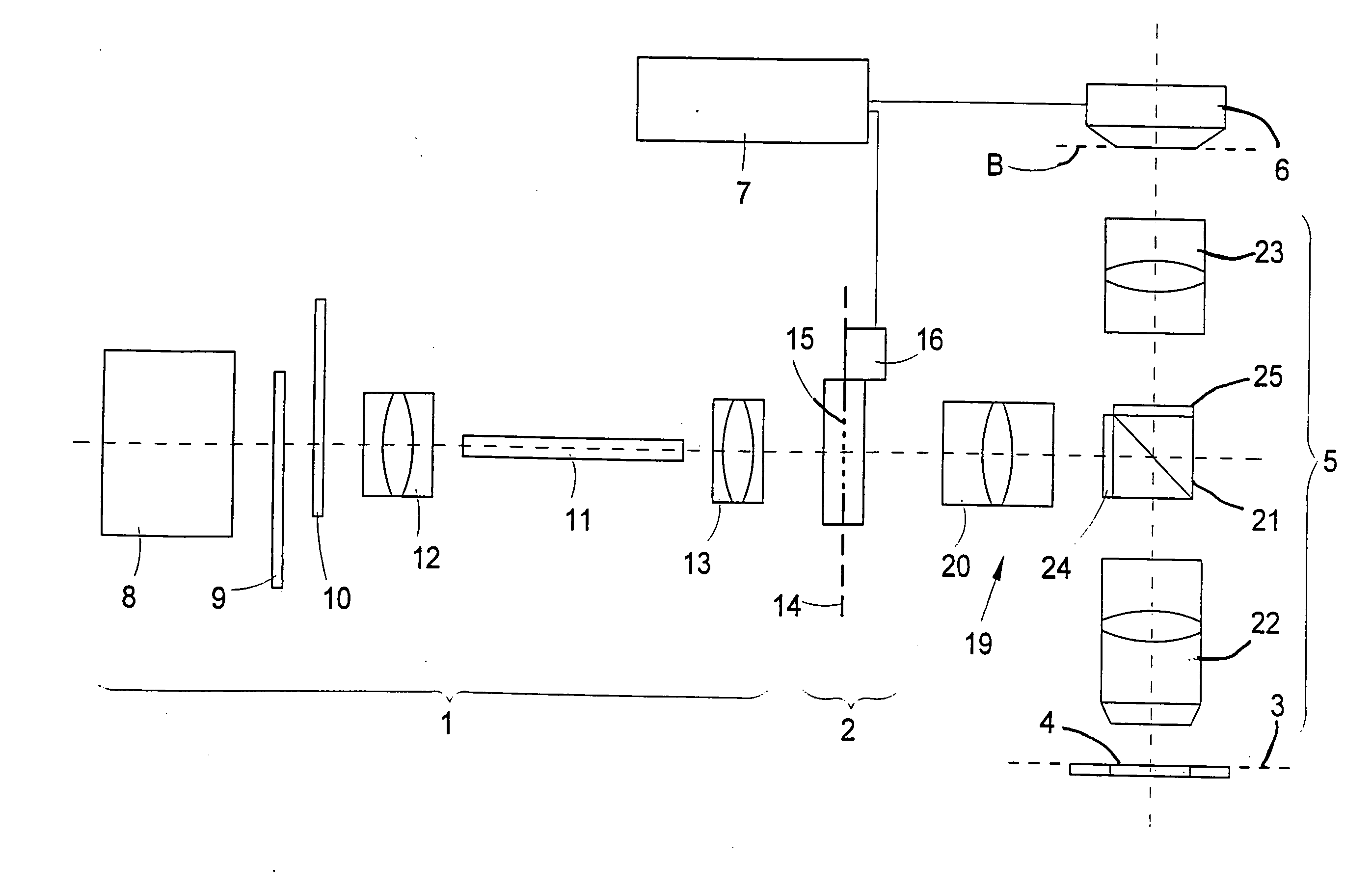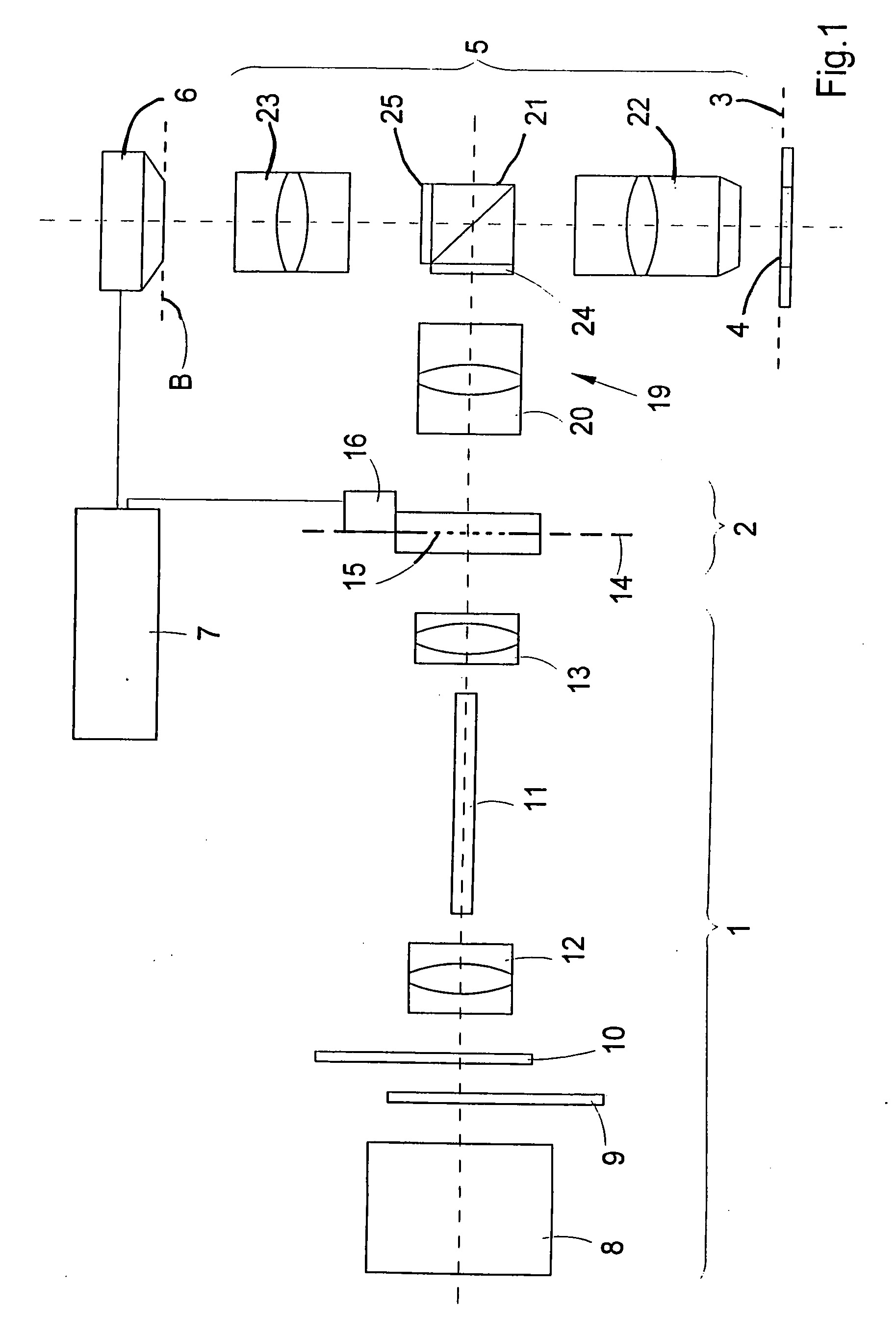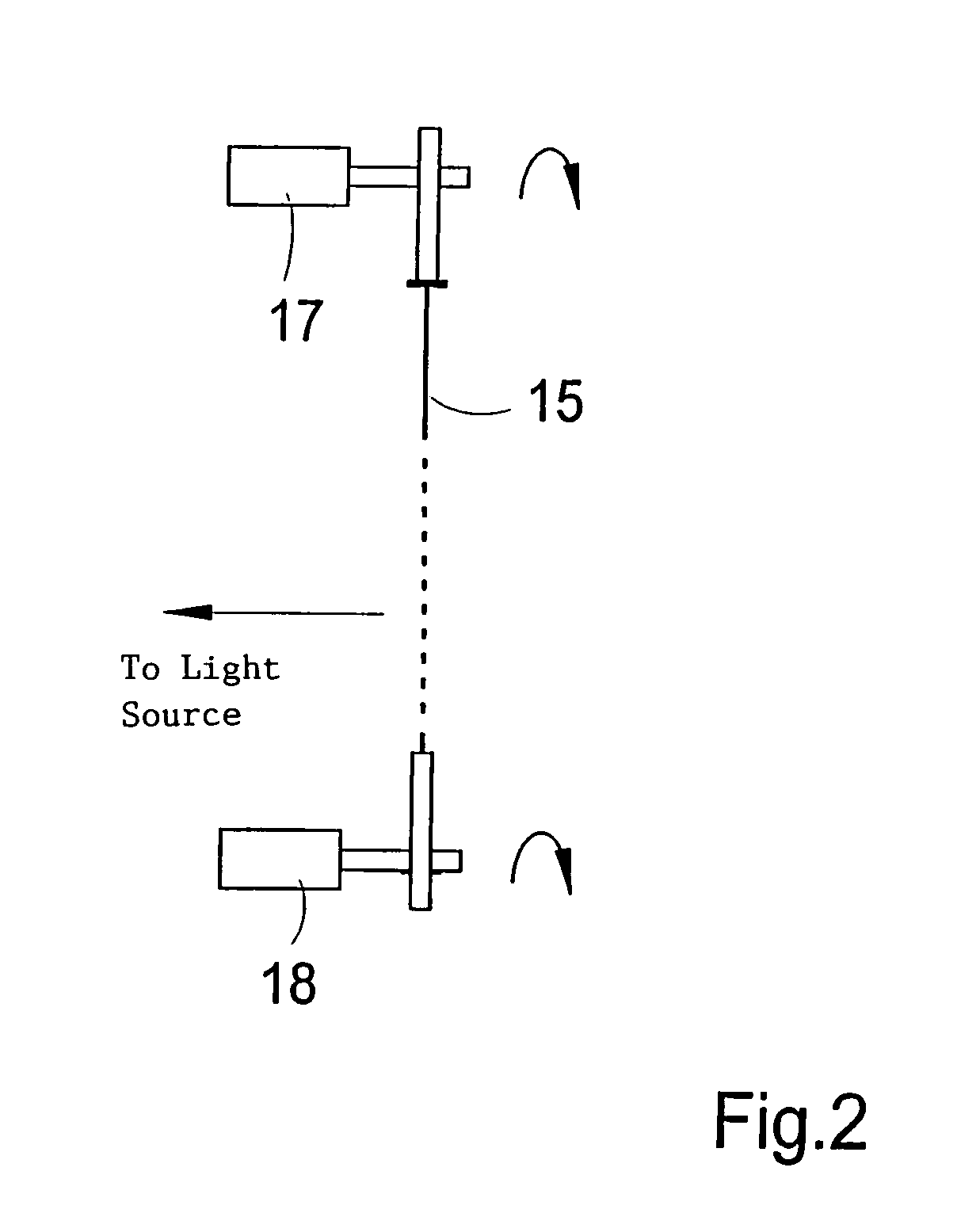Method and arrangement for suppressing stray light
a technology of stray light and arrangement, applied in the field of method and arrangement for suppressing stray light, can solve the problems of stray light, negatively affecting the imaging of objects, and stray light can also come, and achieve the effect of suppressing the influence of stray ligh
- Summary
- Abstract
- Description
- Claims
- Application Information
AI Technical Summary
Benefits of technology
Problems solved by technology
Method used
Image
Examples
Embodiment Construction
[0061]FIG. 1 shows an arrangement for detecting an image of a heterogeneous luminescing or illuminated broad surface object wherein stray light influences are suppressed. The arrangement of FIG. 1 is a first preferred embodiment of the invention and includes an illumination unit 1, a unit 2 for generating illumination patterns in an object plane 3 of an object 4 arranged on a carrier or table. The unit 2 is mounted downstream of the illumination unit 1 and the arrangement further includes an imaging optic 5 for imaging the object 4 on an image plane B and a position resolving detector 6 arranged in the image plane. An evaluation unit 7 is connected via a detector connection to the detector 6 and via a control line to the unit 2.
[0062] The illumination unit 1 includes a light or radiation source 8. The following are arranged downstream of the source 8: a filter 9, a shutter 10, elements 11 and first illumination optics 12 and 13 for homogeneously illuminating a region of a field dia...
PUM
 Login to View More
Login to View More Abstract
Description
Claims
Application Information
 Login to View More
Login to View More - R&D
- Intellectual Property
- Life Sciences
- Materials
- Tech Scout
- Unparalleled Data Quality
- Higher Quality Content
- 60% Fewer Hallucinations
Browse by: Latest US Patents, China's latest patents, Technical Efficacy Thesaurus, Application Domain, Technology Topic, Popular Technical Reports.
© 2025 PatSnap. All rights reserved.Legal|Privacy policy|Modern Slavery Act Transparency Statement|Sitemap|About US| Contact US: help@patsnap.com



